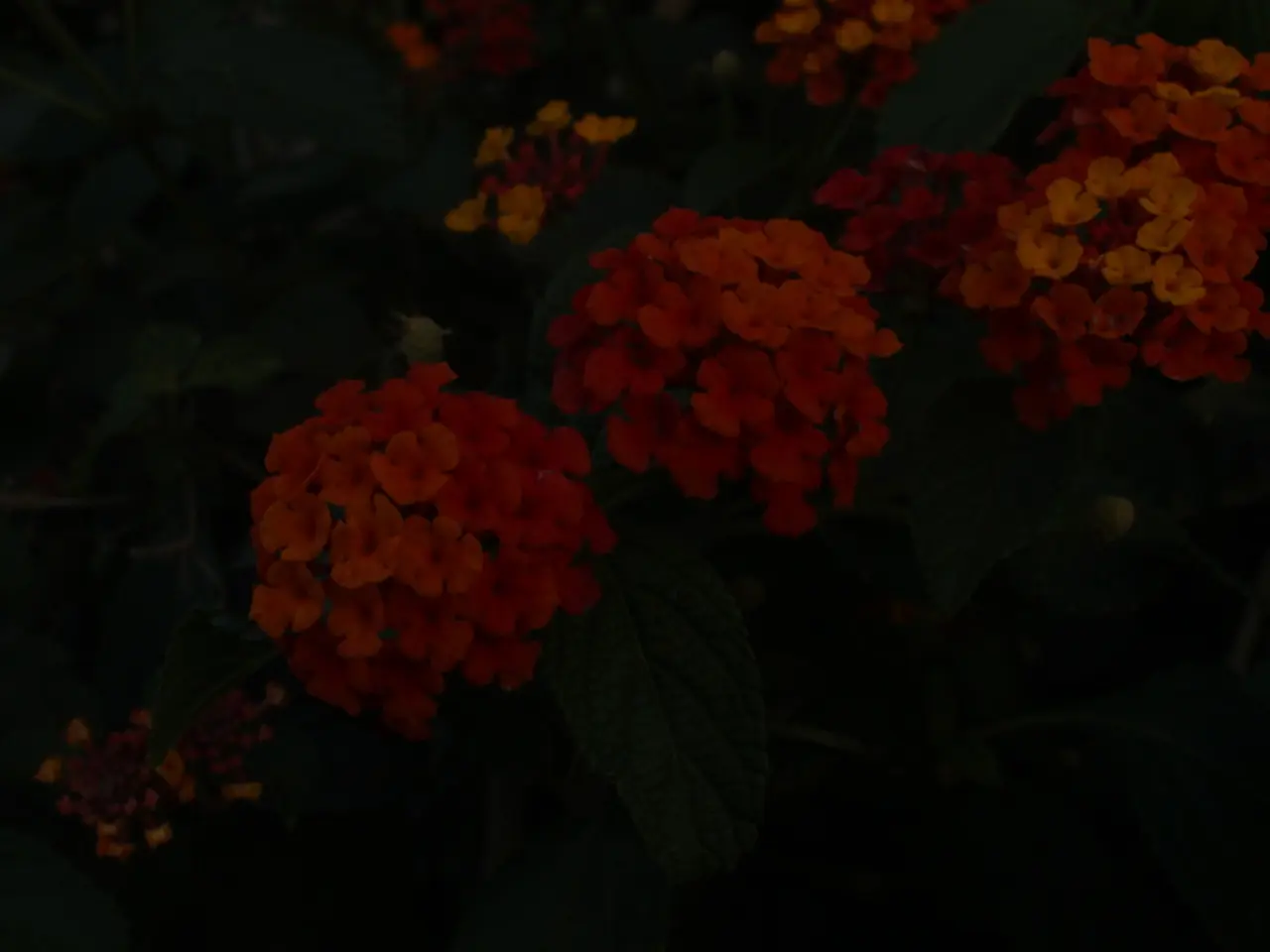Landscaping Fabric: A Look at Its Benefits and Drawbacks for Weed Prevention
Landscaping fabric, a popular choice for gardeners, is a sustainable and eco-friendly solution for weed control. Made from recycled materials, this permeable fabric allows ideal soil moisture and temperature retention while preventing soil erosion and controlling water flows. However, its impact on plant growth can be significant if the wrong type is used, particularly for sensitive plants like roses.
To achieve effective weed control while minimizing impact on plant growth and soil quality, here are some best practices for using landscaping fabric in gardening:
- Use landscaping fabric primarily under hardscape materials: This includes gravel, mulch layers (2–4 inches thick), or decorative stone. Placing it beneath these layers preserves water, air, and nutrient flow, preventing fabric wear and degradation from gardening activities.
- Avoid placing fabric around tree or shrub roots: Restricting oxygen, moisture, and organic matter to the roots can harm plant health over time. Fabric holes can also clog with soil, reducing permeability.
- Cut X-shaped slits just large enough for root balls when planting through fabric. This allows plant establishment without undue root restriction.
- Choose the appropriate fabric type and thickness: Woven fabric is best for flower beds and areas around trees and shrubs due to its good water and air permeability. Thicker, more durable nonwoven types are suited for gravel and high-traffic areas to resist tearing. Avoid heavy fabric under vegetables or herbs where roots are near the surface to prevent crushing.
- Maintain soil health by topping fabric with mulch or gravel layers. This protects the fabric from UV degradation and wear while allowing moisture penetration.
- Regularly monitor and replace or remove landscaping fabric. Over time, it can create a substrate for weeds and may lead to soil compaction and limited beneficial organism activity.
- Consider alternatives for weed control in active gardening zones, such as organic mulches, intensive planting, cardboard barriers, or native ground cover plants. These options enhance soil quality and biodiversity without the downsides of fabric.
In summary, landscaping fabric is most effective and least harmful when used sparingly beneath protective layers in permanent or hardscape-dominated plantings, avoiding direct coverage over root zones and active vegetable beds. Proper installation with minimal root restriction and maintaining protective mulch or gravel layers optimizes weed suppression while preserving soil health and plant growth potential.
Professional installation of landscaping fabric is recommended to ensure proper coverage and prevent choking young plants. When used correctly, landscaping fabric is an effective solution for persistent weeds, potentially more affordable than regularly applying herbicides. However, it's important to remember that landscaping fabric may inhibit the breakdown of garden matter, which can affect the nutrient levels in the soil.
With the right choices and careful installation, landscaping fabric can help maintain a garden with less weeds, reduce yard work, and promote plant growth without using chemicals.
- When planning a home-and-garden renovation, consider incorporating landscaping fabric into your lifestyle to create a garden that's both eco-friendly and low-maintenance.
- To enhance your home-and-garden lifestyle and boost the growth of your plants, practice the recommended best practices when using landscaping fabric, such as choosing the right type and thickness, and maintaining soil health by topping the fabric with mulch or gravel.





